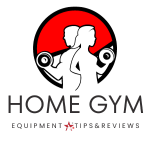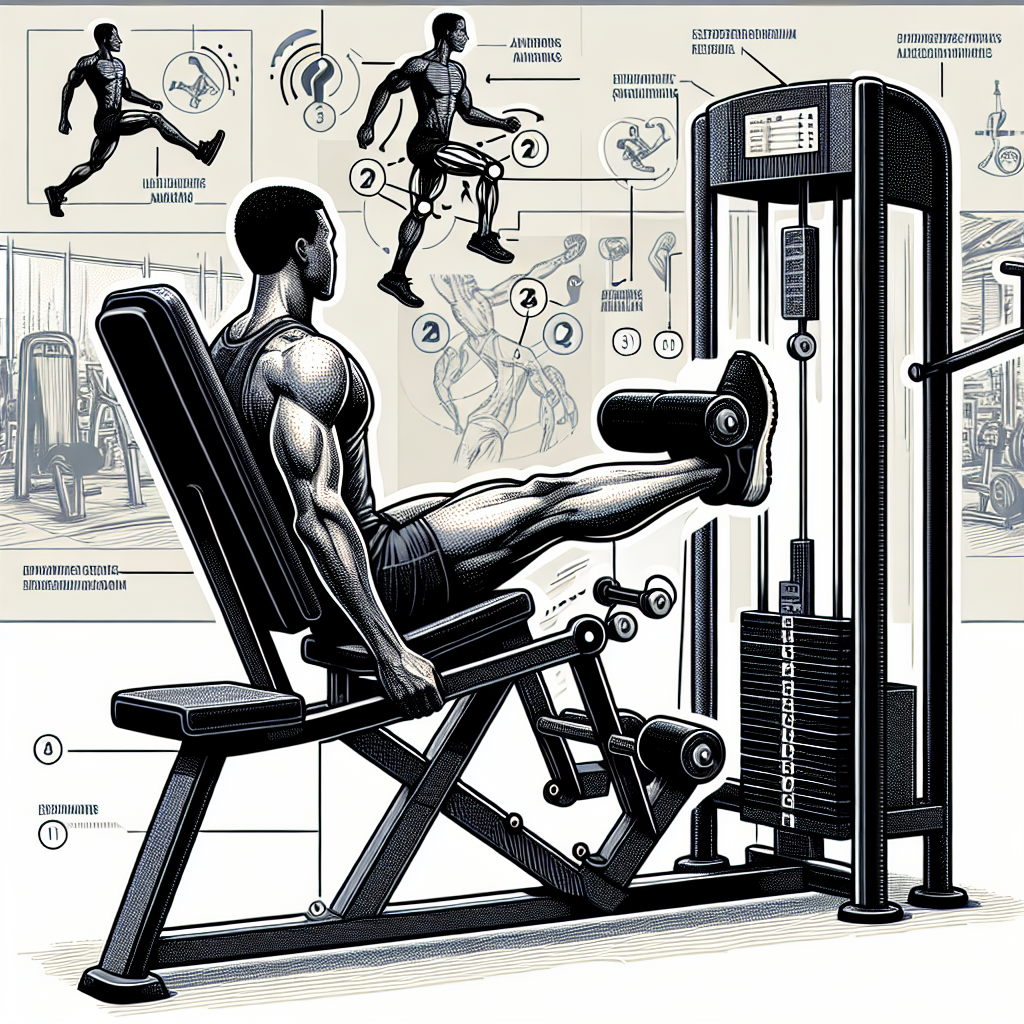The article explores the topic of enhancing leg flexibility and range of motion through the use of a leg spreader machine in a gym setting. This piece aims to provide readers with an understanding of the benefits associated with utilizing this specific gym equipment, while also considering the cost and effectiveness in comparison to other machines commonly found in modern fitness facilities. By delving into the details of leg spreader machines and their potential to improve leg flexibility and range of motion, readers can gain valuable insights into an exercise method that may enhance their workouts and overall fitness goals.

Benefits of Leg Flexibility and Range of Motion
Leg flexibility and range of motion are essential components of maintaining physical fitness and overall well-being. When you have flexible and mobile legs, you experience a multitude of benefits, including improved performance in sports and physical activities, reduced risk of muscle and joint injuries, enhanced overall mobility and posture, and increased muscle strength and endurance. By investing time and effort into improving the flexibility and range of motion in your legs, you can optimize your athletic potential and lead a healthier, more active lifestyle.
Introduction to the Leg Spreader Machine
The leg spreader machine is a Modern gym equipment specifically designed to target the muscles in the legs and enhance leg flexibility and range of motion. This machine consists of a padded seat and two adjustable leg rests connected to a resistance mechanism. By utilizing the leg spreader machine in your workout routine, you can effectively stretch and strengthen the muscles in your legs, allowing you to achieve greater mobility and flexibility.
Overview of the machine’s design and functionality
The leg spreader machine typically features a sturdy frame made of steel or another durable material, providing stability and support during exercises. The padded seat ensures comfort while performing the exercises, while the adjustable leg rests can be positioned according to the user’s height and flexibility level. The resistance mechanism allows the user to adjust the intensity of the exercise, providing a challenging but safe workout.
How it targets the muscles in the legs
The leg spreader machine primarily targets the muscles in the inner and outer thighs, hips, and hamstrings. By performing exercises on this machine, you can specifically isolate and engage these muscle groups, leading to improved flexibility and range of motion. The resistance provided by the machine helps to strengthen the muscles, promoting overall lower body strength.
Different variations and models available
There are various variations and models of leg spreader machines available in the market. Some machines focus solely on the inner and outer thigh muscles, while others offer additional features to target different muscle groups in the legs. It is important to choose a machine that best suits your specific needs and fitness goals. Take into consideration factors such as adjustability, durability, and the reputation of the manufacturer before making a purchase.

Proper Techniques for Using the Leg Spreader Machine
To fully maximize the benefits of the leg spreader machine and avoid potential injuries, it is crucial to use proper techniques during your workout sessions. The following guidelines outline the correct way to use the machine:
Adjusting the machine for individual comfort and safety
Before starting your workout, ensure that the leg spreader machine is adjusted to your personal comfort and safety. Adjust the seat height and leg rests according to your body proportions. It is important to maintain a stable and balanced position throughout the exercises.
Correct positioning of the legs on the machine
When positioning your legs on the machine, ensure that your feet are firmly placed against the footrests or pads. Your knees should be aligned with the hinges of the leg rests, and your legs should be spread comfortably. This positioning ensures proper alignment and prevents unnecessary strain on the joints and muscles.
Appropriate range of motion and resistance levels
While exercising on the leg spreader machine, it is important to maintain an appropriate range of motion and resistance level. Avoid overstretching or going beyond your body’s limits, as this can lead to strains or injuries. Start with a comfortable range of motion and gradually increase it as your flexibility improves. Similarly, adjust the resistance level to a challenging yet manageable intensity.
Recommended repetitions and sets
To achieve optimal results, it is recommended to perform multiple sets of leg spreading exercises, with a suitable number of repetitions in each set. Depending on your fitness level and goals, aim for 2 to 4 sets of 10 to 15 repetitions per exercise. Allow adequate rest between sets to prevent muscle fatigue and promote recovery.
Safety Precautions and Considerations
While the leg spreader machine can be an effective tool for enhancing leg flexibility, it is important to prioritize safety during your workout sessions. Consider the following precautions and safety measures:
Consultation with a professional trainer or physical therapist
Before incorporating the leg spreader machine into your workout routine, it is advisable to consult with a professional trainer or physical therapist. They can assess your current fitness level and provide guidance on proper technique and form. This professional guidance can help prevent injuries and ensure you are using the machine correctly.
Gradual progression to avoid strains or injuries
It is crucial to progress gradually when using the leg spreader machine. Start with lighter resistance and shorter ranges of motion, gradually increasing the intensity and range as your flexibility improves. Sudden or excessive increases in resistance or range of motion can put unnecessary strain on your muscles and joints, leading to potential injuries.
Avoiding overstretching and locking the knees
While using the leg spreader machine, it is essential to avoid overstretching or hyperextending your legs. Overstretching can strain the muscles and ligaments, increasing the risk of injury. Additionally, locking the knees places excessive stress on the joint and may lead to discomfort or damage. Maintain control and stability throughout the exercises, focusing on a smooth and controlled movement.
Proper warm-up and stretching before using the machine
To prepare your muscles for the leg spreading exercises, it is important to properly warm up and perform stretching exercises. Engage in a dynamic warm-up routine that includes light cardiovascular exercises, such as jogging or cycling, to increase blood flow and warm up the muscles. Follow this with dynamic stretches that target the lower body, focusing on the muscles that will be engaged during the leg spreader machine exercises.

Exercises for Leg Flexibility and Range of Motion
In addition to utilizing the leg spreader machine, there are several exercises that can further enhance leg flexibility and range of motion. Integrating these exercises into your workout routine can help to diversify your training and promote overall leg mobility. Some effective exercises for improving leg flexibility include:
Inner thigh stretch
To stretch the inner thighs, stand with your feet wider than shoulder-width apart. Slowly shift your weight to one side while bending the knee of that leg. Keep your other leg straight and slowly lean towards the bent knee side, feeling a stretch in the inner thigh area. Hold the stretch for about 30 seconds, then repeat on the other side.
Outer thigh stretch
To stretch the outer thighs, stand with your feet together. Cross one leg over the other and bend at the hips, reaching towards the ground or your opposite foot. You should feel a stretch along the outer side of the straight leg. Hold the stretch for about 30 seconds, then switch sides.
Hamstring stretch
Lie on your back with your legs extended. Lift one leg towards the ceiling, keeping it as straight as possible. Use a towel or strap to gently pull your leg towards your body, feeling a stretch in the back of your thigh. Hold the stretch for about 30 seconds, then repeat on the other leg.
Calf stretch
Stand facing a wall with one foot in front of the other. Lean forward, placing your hands on the wall for support. Keep your back leg straight and your heel on the ground, feeling a stretch in the calf muscle. Hold the stretch for about 30 seconds, then switch legs.
Hip mobility exercises
Performing hip mobility exercises can also improve leg flexibility. Some effective exercises include leg swings, hip circles, and clamshells. These exercises target the muscles surrounding the hip joint, promoting greater mobility and flexibility.
Other Equipment and Accessories for Leg Flexibility
In addition to the leg spreader machine, there are various equipment and accessories that can aid in enhancing leg flexibility. These tools can be used in conjunction with the machine or as standalone tools for stretching and strengthening the legs. Some popular equipment and accessories for leg flexibility include:
Resistance bands
Resistance bands are versatile tools that can be used for a variety of leg exercises. They provide resistance throughout the range of motion, helping to strengthen and stretch the leg muscles. From simple stretches to more advanced resistance exercises, resistance bands can be a valuable addition to your leg flexibility routine.
Foam rollers
Foam rollers are cylindrical foam devices that can be used for self-myofascial release. Rolling various muscle groups, including the legs, on a foam roller can help alleviate muscle tension and improve flexibility. Using a foam roller before and after workouts can aid in muscle recovery and promote overall leg mobility.
Yoga blocks
Yoga blocks are props commonly used in yoga practices, but they can also be utilized for leg flexibility exercises. Placing a yoga block under the foot or hand during stretches can provide additional support and stability, allowing for a deeper and more controlled stretch.
Stretching straps
Stretching straps are long, adjustable straps that can assist in deepening a stretch, especially for individuals with limited flexibility. By using a stretching strap, you can gradually increase the intensity of a stretch and reach a greater range of motion. These straps are particularly useful for individuals who are working on improving flexibility in their legs.

Integration of Leg Spreader Machine in Workout Routines
To fully benefit from the leg spreader machine, it is important to incorporate it into your regular workout routines. By integrating the machine into lower body workouts, you can specifically target the leg muscles and enhance leg flexibility. Consider the following suggestions for integrating the leg spreader machine into your workout routine:
Incorporating the machine into lower body workouts
Design lower body workout routines that include exercises performed on the leg spreader machine. Begin your workout with compound exercises such as squats or lunges to warm up the leg muscles. Follow these with targeted exercises on the leg spreader machine, focusing on the inner and outer thighs, hips, and hamstrings. Finish your workout with lower body stretches to promote flexibility and aid in muscle recovery.
Using it as part of a comprehensive flexibility routine
The leg spreader machine can also be used as part of a comprehensive flexibility routine. Dedicate specific training sessions to stretching and mobility exercises, incorporating the leg spreader machine to specifically target the leg muscles. Combine these exercises with other stretching techniques and equipment to diversify your routine and maximize the benefits of leg flexibility training.
Alternative Methods for Enhancing Leg Flexibility
While the leg spreader machine can be a highly effective tool for enhancing leg flexibility, there are alternative methods that can also help you achieve your flexibility goals. Consider incorporating the following methods into your training routine:
Yoga and Pilates exercises
Yoga and Pilates both emphasize flexibility, strength, and balance. Incorporating yoga or Pilates exercises into your routine can complement the use of the leg spreader machine. These exercises often involve dynamic stretching, deep breathing, and mindfulness, promoting overall body awareness and flexibility.
Dynamic stretching
Dynamic stretching involves moving parts of your body through a full range of motion, without holding the position. By incorporating dynamic stretches into your warm-up routine, you can increase blood flow to the muscles and prepare them for physical activity. Dynamic stretches can also improve flexibility and range of motion in the legs.
Massage and foam rolling
Massage and foam rolling can help release muscle tension, improve circulation, and enhance flexibility. By using massage techniques or a foam roller on your legs, you can target specific muscle groups and promote muscle recovery. Regular self-massage or foam rolling can aid in maintaining leg flexibility and preventing muscle tightness.
Mobility drills
Mobility drills focus on improving joint range of motion and movement patterns. By incorporating mobility drills that specifically target the hips, knees, and ankles, you can enhance leg flexibility and promote better overall movement. These drills often involve exercises such as leg swings, ankle circles, and hip rotations.
Enhancing Leg Flexibility for Specific Activities
Different activities require specific leg flexibility and range of motion. By tailoring your leg flexibility training to suit your chosen activities, you can optimize performance and reduce the risk of injuries. Consider the following suggestions for enhancing leg flexibility for specific activities:
Running and jogging
Running and jogging require sufficient leg flexibility to allow for efficient stride length and proper joint alignment. Incorporate leg stretches that target the hips, hamstrings, and calves to improve leg flexibility for running. Additionally, dynamic warm-ups that include leg swings and lunges can help prepare your legs for the repetitive impact of these activities.
Dancing and gymnastics
Dancing and gymnastics demand a high level of leg flexibility and range of motion. To enhance leg flexibility for these activities, focus on stretching exercises that specifically target the hips, hamstrings, and inner thighs. Include exercises that simulate dance or gymnastics movements, such as splits or leg lifts, to further improve flexibility and functional mobility.
Martial arts and kickboxing
Martial arts and kickboxing require leg flexibility for executing various kicks and maneuvers. To enhance leg flexibility for these activities, incorporate both static and dynamic leg stretches. Static stretches, such as a standing quadriceps stretch or seated butterfly stretch, can be performed to improve passive flexibility. Dynamic stretches like high kicks or knee lifts can help improve active flexibility and functional mobility.
Cycling and spinning
Cycling and spinning involve repetitive leg movements, necessitating proper leg flexibility and range of motion. To enhance leg flexibility for these activities, focus on stretches that target the hip flexors, hamstrings, and calves. Additionally, incorporate exercises that simulate the pedaling motion, such as leg circles or standing quad stretches, to optimize leg flexibility and prevent muscle imbalances.
Conclusion
The leg spreader machine is a valuable tool for enhancing leg flexibility and range of motion. By incorporating this machine into your workout routine and following proper techniques, you can experience the numerous benefits associated with leg flexibility training. Remember to prioritize safety by consulting with a professional trainer or physical therapist, gradually progressing your exercises, and avoiding overstretching or locking the knees. Additionally, diversify your leg flexibility training by incorporating alternative methods such as yoga, dynamic stretching, massage, and mobility drills. Tailor your leg flexibility training to suit specific activities to optimize performance and reduce the risk of injuries. By incorporating leg flexibility exercises into your daily routine, you can optimize your physical performance and lead a healthier, more active lifestyle.

